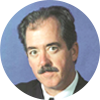- What is the term for the risk assessment method that is currently applied to evaluate the safety of car seats and head restraints?
- head injury criterion (HIC).
- neck injury criterion (NIC).
- c-spine injury criterion (CIC).
- none of the above.
- What is the most correct statement regarding the observed profound increase of whiplash incidence in the past decade?
- It has not been shown to be real. There has not been an increase in incidence of whiplash.
- The increase has been shown to be due to the legal system's influence on lawsuits, rather than a true increase in injury risk.
- The real reason for the increased risk is simply that people and doctors are more familiar with the condition. Victims are more likely to visit the doctor; the doctor is more likely to make the diagnosis.
- Two important reasons for the increased risk are the new car assessment program (NCAP) and increased stiffness requirement of seat backs.
- The reason we often see a para-doxic relationship between injury risk and vehicle property damage in low-speed rear-impact crashes (LOSRIC) (i.e., less injury in higher property damage crashes; more injury in lower or zero property damage crashes) is:
- When damage occurs in higher-speed crashes, subjects generally hear screeching tires, and are thus alerted to an impending crash. This provides a split second for them to react by bracing and thus mitigating injury.
- In higher-speed crashes with more resulting property damage, occupants usually experience some degree of shock, which makes them less likely to "remember" the pain.
- Most claiming behavior has been shown to be linked to claims settlement satisfaction. Claims in low-speed crashes with little or no property damage are more often disputed by third parties, resulting in a larger number of questionable claims.
- In crashes in which structural damage occurs, the crash duration is longer, and reduces the occupant's acceleration pulse and, hence, risk for injury.
- When testifying at trial, an expert might want to refer to a specific scientific study to support his or her opinions. Opposing counsel is likely to object on the basis of the hearsay rule that states:
- It is likely that the witness did not read the study under discussion, but was merely told about it by someone else.
- Unless the expert actually has a printed copy of that reference for opposing counsel to look at, the mention of it is purely hearsay and not admissible.
- Only the author of the paper can discuss its results and conclusions. When experts cite the results and conclusions of authors, it is considered hearsay and is not admissible.
- None of the above are correct.
- There are ways of getting around the hearsay objection in a trial. The best is:
- Accuse the attorney voicing the objection of a violation of jury instructions (i.e., to base conclusions on all facts available).
- Call for a long recess and hope that the attorney forgets his or her objection.
- Offer to let the opposing counsel see all that is referenced before the trial.
- Federal Rule of Evidence 803(18). It states that learned treatises (e.g., textbooks on a subject) are not excluded by the hearsay rule when identified by him or her as a reliable authority.
- Courts often use Frye or Daubert (depending on the state) as tests for expert testimony. These rules are used by judges and attorneys to:
- Test the admissibility of expert testimony on the basis of its scientific validity and general acceptance.
- Test the witness' actual understanding of the scientific methods used.
- Determine the witness' credibility on the basis of his or her training and/or experience in the particular field from which his or her testimony will come.
- None of the above are correct.
- Which of the following statements is most true regarding the use of video evidence at trial?
- It is rarely allowed during testimony.
- It is always allowed during testimony.
- It has not been shown to make a significant difference in the outcomes of trials.
- Studies show that if the opposing side does not use video evidence, the side using it (plaintiff or defense) will prevail more often.
- From a meta-analysis of over 55 years of outcome studies, I have reported that the average figures reported for chronicity - which may include anything form minor occasional complaints to disabling complaints - are:
- 35-55 percent.
- 0-12 percent.
- 70-90 percent.
- none of the above.
- "Backset" describes:
- The distance the occupant moves rearward in the seat at the time of a rear impact crash.
- The distance between the head restraint and the occupant's head before the crash.
- The persons in the rear seat of the car that is struck from the rear.
- The relative positions of two colliding cars when they come to rest after the crash.
- "Ride-down" refers to:
- The amount of crush occurring at the point of maximal engagement when two cars collide (also known as dynamic crush).
- The amount of crush measurable after the crash (also known as residual crush).
- The phenomenon of riding down beneath the seat belt and harness in a high-speed frontal crash (also known as submarining).
- None of the above are correct.
- b
- d
- d
- c
- d
- a
- d
- a
- b and
- d.
Arthur Croft,DC,MS,MPH,FACO,FACFE
Director, Spine Research Institute of San Diego
San Diego, California
Click here for previous articles by Arthur Croft, DC, MS, MPH, FACO.





